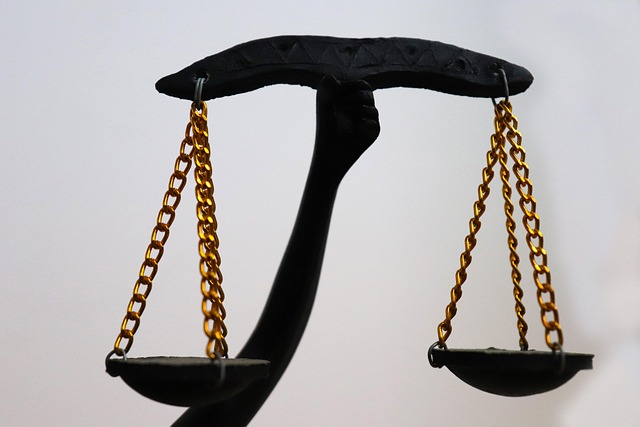Navigating Appeals for Pain and Suffering Compensation Denial

After a denial of pain and suffering compensation, individuals can appeal by presenting new evidence…….
In the intricate web of legal and financial systems, pain and suffering compensation stands as a cornerstone of redress for individuals who have endured physical or emotional harm due to another party’s negligence or intentional acts. This concept goes beyond mere monetary reimbursement; it is a structured mechanism designed to acknowledge and alleviate the profound impact of pain, disability, and emotional turmoil caused by accidental or deliberate injuries. In this comprehensive article, we embark on a journey through the intricate world of pain and suffering compensation, exploring its multifaceted aspects, global implications, and the ongoing efforts to refine and improve its delivery. By delving into various facets of this topic, we aim to equip readers with a profound understanding of its significance in personal injury cases, legal frameworks, and societal welfare.
Pain and suffering compensation, also known as pain and distress damages or non-economic damages, represents the financial reimbursement awarded to an injured party for the physical and emotional hardships they have experienced or will continue to endure due to someone else’s actions. It goes beyond the direct, tangible losses associated with medical bills and lost wages; instead, it focuses on the intangible aspects of harm. Core components typically include:
The concept of compensating individuals for pain and suffering has deep historical roots, dating back to ancient legal codes and common law traditions. However, its formalization and recognition as a distinct category of damages have evolved over centuries:
The international landscape of pain and suffering compensation displays a diverse array of practices, influenced by cultural, legal, and economic factors:
| Region | Compensation Approach | Notable Trends | Challenges |
|---|---|---|---|
| North America | Relatively robust system with strict guidelines and substantial awards. | Strict cap on non-economic damages in some states, leading to debates about adequacy of compensation. | High cost of litigation and concerns over excessive awards. |
| Europe | Varied approaches across countries, with some emphasizing community-based support and others focusing on individual compensation. | Growing emphasis on access to justice and ensuring fairness for all claimants. | Legal variations create challenges in cross-border cases, leading to inconsistent outcomes. |
| Asia Pacific | Generally lower compensation awards compared to North America and Europe, with a focus on restorative justice. | Rapidly growing economies influence lower expectations of compensation, but this is changing with evolving legal systems. | Limited awareness and understanding of pain and suffering among some communities and legal professionals. |
| Middle East | Conservative approach, often reflecting cultural norms, with less emphasis on individual compensation. | Increasing awareness of human rights and potential shifts towards more comprehensive compensation frameworks. | Strict laws and regulations can hinder access to justice for victims in some countries. |
| Latin America | Varied practices, but a general trend towards recognizing non-economic damages. | Growing influence of international human rights laws impacting local compensation practices. | Lack of uniform legal standards across countries, leading to disparities in outcomes. |
The global trends highlight significant variations in how pain and suffering compensation is administered and perceived. These disparities can be attributed to:
These variations present challenges when dealing with international cases or victims from diverse backgrounds. Standardizing compensation practices while respecting cultural differences remains an ongoing debate in global legal circles.
Pain and suffering compensation has significant economic implications, both as a cost to defendants and as an investment for plaintiffs.
Technology has revolutionized many aspects of personal injury claims, including pain and suffering compensation.
The future holds immense potential for technological innovations in pain and suffering compensation:
The regulatory framework governing pain and suffering compensation varies widely across jurisdictions, reflecting the complex interplay between legal traditions, public policy, and cultural norms.
Despite its critical role, pain and suffering compensation faces several challenges and criticisms that require continuous attention and strategic responses.
Sweden’s approach to pain and suffering compensation is notable for its emphasis on restorative justice and community support. In a groundbreaking case, a young woman suffered severe injuries in a traffic accident, leading to permanent disability. Instead of a lengthy legal battle, the parties involved adopted a restorative practice model. This process facilitated open dialogue between the claimant, defendant, and their representatives, resulting in an agreement that provided for medical care, adaptive technology, and financial support for future needs. The case demonstrated that creative dispute resolution methods can lead to fair outcomes while reducing the emotional and financial burden on victims.
In a major U.S. city, a law firm embarked on a digital transformation initiative to streamline personal injury claims, including pain and suffering compensation. They implemented a comprehensive legal technology platform that automated many aspects of case management, from document storage to case tracking. As a result, the average time to resolve cases decreased by 25%, and client satisfaction ratings improved significantly. This case study highlights the potential for technology to enhance efficiency, reduce costs, and improve access to justice in pain and suffering compensation claims.
The future of pain and suffering compensation holds both challenges and opportunities, shaped by technological advancements, evolving legal landscapes, and societal shifts.
Pain and suffering compensation is an intricate aspect of personal injury law that plays a critical role in recognizing and redressing the harm suffered by individuals. This article has explored various dimensions, from economic implications to technological advancements, policy considerations, and case studies, highlighting both its complexities and essential functions within our legal systems.
As society continues to evolve, so too will the landscape of pain and suffering compensation. By embracing technological innovations, promoting accessible justice, and addressing challenges through strategic responses, we can ensure that this critical system serves the best interests of all stakeholders—victims, defendants, and the broader community.
Through continuous dialogue, research, and adaptation, the future of pain and suffering compensation promises to be more efficient, fair, and responsive to the changing needs of our diverse societies.

After a denial of pain and suffering compensation, individuals can appeal by presenting new evidence…….

Pain and suffering compensation is a critical aspect of personal injury cases, addressing physical a…….

Personal injury and wrongful death claims involve seeking pain and suffering compensation for non-ec…….

Pain and suffering compensation is a key aspect of personal injury law, providing financial support…….

The assessment of pain and suffering compensation involves judges interpreting subjective harm exper…….

Understanding pain and suffering compensation requires consulting a qualified attorney who gathers e…….

Pain and suffering compensation is a key aspect of personal injury law, providing financial relief f…….

Medical records are vital for pain and suffering compensation claims, providing evidence of injury e…….

After an accident, meticulously document physical and emotional symptoms for robust pain and sufferi…….

Understanding state laws regarding pain and suffering compensation is crucial for personal injury ca…….